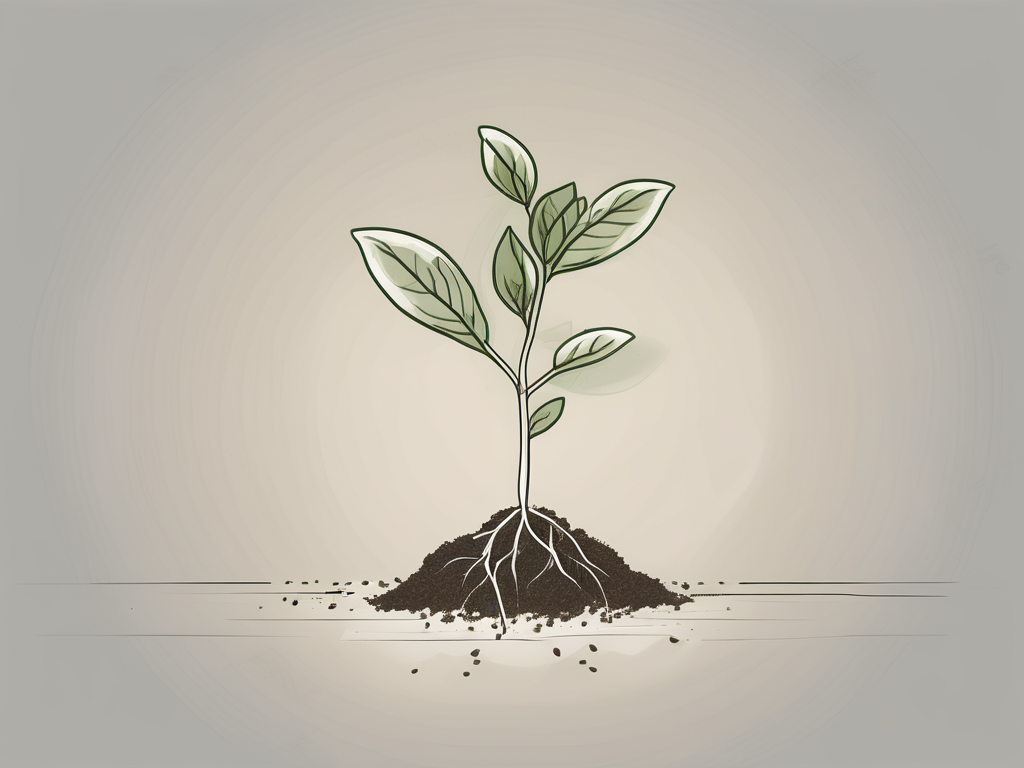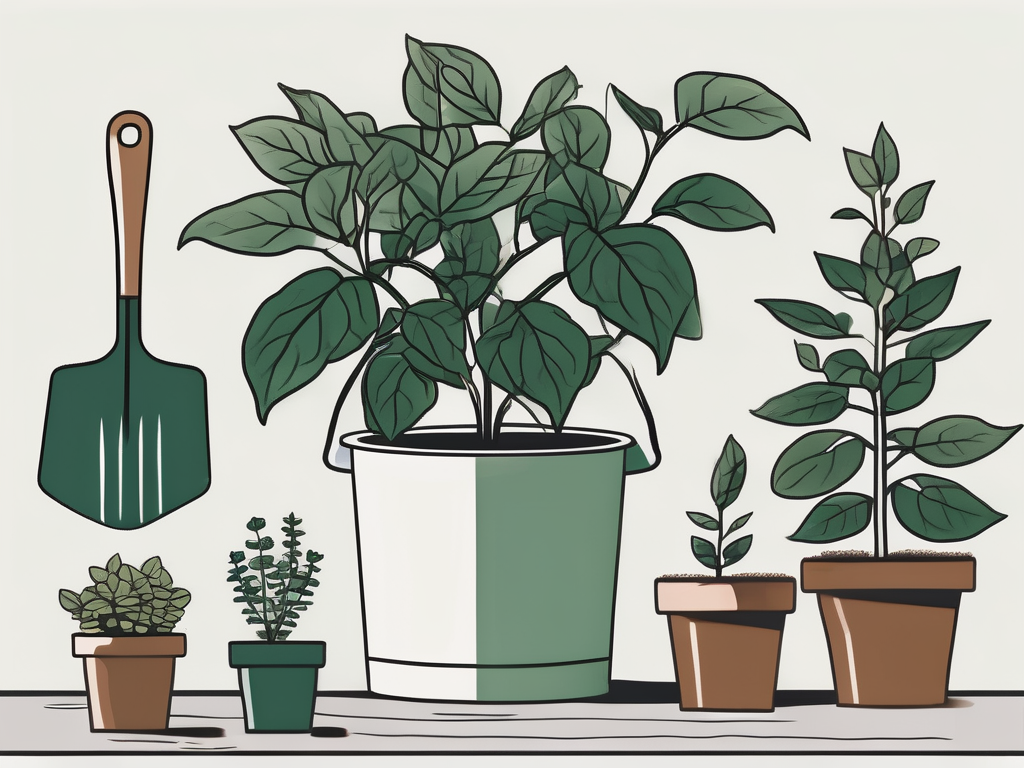
Elephant ear plants, with their large, striking leaves, can transform any space into a tropical oasis. Their bold appearance and lush foliage make them a favorite among plant lovers looking to add a bit of drama to their homes. But what if you want more of these beauties without breaking the bank? Propagation is your answer!
This post is here to guide you through the process of propagating elephant ear plants, ensuring that you can enjoy these stunning plants in abundance. From selecting the right tools to nurturing your new plants, we've got you covered with easy-to-follow steps and plenty of tips.
Understanding Elephant Ear Propagation
Before diving into the steps, it's helpful to understand what propagation means for elephant ear plants. These plants, known scientifically as Colocasia, Alocasia, and Xanthosoma, can be propagated through their corms or tubers. Think of these as the plant's underground storage units, packed with nutrients and energy.
When you propagate through corms, you're essentially giving the plant a fresh start. The corms produce new shoots that eventually grow into full-sized plants. It's a bit like planting a seed, but with a head start! This method is not only efficient but also quite rewarding, allowing you to expand your collection or share with fellow plant enthusiasts.
While the process is straightforward, timing is essential. The best time to propagate elephant ear plants is in early spring, just as they're coming out of dormancy. This ensures that your new plants have the growing season ahead to establish themselves.
Gathering Your Supplies
Now that you have a grasp of what propagation involves, let's talk about what you'll need. Having the right tools and materials on hand will make the process smoother and more enjoyable. Here's a checklist to get you started:
- Gardening gloves: These will protect your hands from any potential irritants in the soil.
- Sharp knife or pruning shears: You'll need these to cut the corms cleanly.
- Sterilizing solution: A simple mixture of water and bleach or rubbing alcohol to sterilize your cutting tools.
- Well-draining potting soil: Look for a mix that's suitable for tropical plants.
- Pots or containers: Make sure these have drainage holes.
- Watering can or spray bottle: Keep your new plants hydrated with these.
With these supplies ready, you'll be all set to embark on your propagation journey. Remember, preparation is key to success, so take the time to gather everything before you start.
Preparing the Parent Plant
Your first step is to get the parent plant ready for propagation. This involves carefully removing the plant from its pot and inspecting the corms. Here's how to do it:
- Water the plant: A day or two before you plan to propagate, water the parent plant thoroughly. This makes it easier to remove from the pot and reduces stress on the plant.
- Remove the plant: Gently tip the plant on its side, and support the base of the plant as you slide it out of the pot. Avoid pulling on the leaves, which can cause damage.
- Inspect the roots: Shake off excess soil and take a look at the root system. Healthy roots are firm and white. Identify the corms, which are usually bulbous and located near the base of the plant.
This step is crucial for ensuring that you select healthy corms for propagation. A little patience here goes a long way in setting the stage for successful new growth.
Dividing the Corms
With the parent plant prepped, it's time to divide the corms. This is where your sharp knife or pruning shears come into play. Follow these steps to ensure a clean and successful division:
- Sterilize your tools: Dip your knife or shears in the sterilizing solution to prevent disease transfer.
- Select the corms: Choose corms that are firm and free of blemishes. Each corm should have at least one or two visible buds or "eyes."
- Make the cut: Carefully cut the corm away from the parent plant, ensuring you include a portion of the root system. Make clean cuts to avoid damaging the plant tissue.
- Dry the corms: Allow the cut corms to air dry for a few hours. This helps prevent rot by allowing any cut surfaces to callus over.
Dividing corms may sound a bit intimidating at first, but with steady hands and a bit of practice, you’ll soon become a pro. Remember, precision is your friend here!
Planting the Corms
Once your corms are ready, it's time to plant them in their new homes. This step is all about giving your new plants the best start possible. Here's how to do it:
- Choose the right pot: Select a pot that's slightly larger than the corm. Make sure it has drainage holes to prevent waterlogging.
- Fill with soil: Add well-draining potting soil to the pot, leaving enough room for the corm.
- Position the corm: Place the corm in the soil with the bud facing up. Cover it with about an inch of soil.
- Water lightly: Give the corm a gentle watering to settle the soil around it. Be cautious not to overwater, as this can cause rot.
Setting up your new plants for success involves a combination of the right soil, pot size, and watering technique. It might take a bit of experimenting to find the perfect balance, but that’s part of the fun!
Caring for Your Propagated Plants
Now that your new plants are potted, the next step is to care for them as they grow. Here are some tips to ensure your plants thrive:
- Light: Place your plants in a spot with bright, indirect sunlight. Direct sunlight can scorch the leaves, so a sheer curtain can help diffuse light if needed.
- Watering: Keep the soil consistently moist, but not soggy. Elephant ear plants prefer humidity, so misting the leaves can be beneficial.
- Temperature: These plants love warmth, so aim to keep the temperature between 65-85°F (18-29°C).
- Fertilizing: During the growing season, feed your plants with a balanced, water-soluble fertilizer every month to promote healthy growth.
Caring for your new plants is all about finding the right environment and routine. Each plant is unique, so pay attention to their responses and adjust your care accordingly.
Dealing with Common Issues
No plant journey is without its hiccups. Here are some common issues you might encounter and how to address them:
- Yellowing leaves: This can be a sign of overwatering. Check your watering schedule and ensure your pot has proper drainage.
- Brown edges: Often a sign of low humidity. Increase moisture levels with a humidifier or by misting the leaves.
- Pests: Keep an eye out for spider mites and aphids. A solution of neem oil and water can be an effective treatment.
Don't be discouraged if you encounter these issues. Think of it as an opportunity to learn more about your plants and how to care for them. Over time, you'll become more attuned to their needs.
Reaping the Rewards of Propagation
Once your propagated plants start to grow, you'll see the fruits of your labor. Watching new leaves unfurl is a rewarding experience, and knowing you played a part in that growth is incredibly satisfying.
This is also a great time to experiment with different placements in your home. Elephant ear plants can make a statement in any room, and moving them around can help you find the perfect spot where they truly shine.
Propagation not only expands your plant collection but also deepens your connection with your plants. It's a journey filled with learning, patience, and ultimately, the joy of nurturing life.
Sharing Your Propagated Plants
One of the best parts of propagation is sharing your plant babies with friends and family. Here are some fun ways to spread the plant love:
- Gift them: A propagated plant makes a thoughtful and personal gift for birthdays, housewarmings, or just because.
- Swap with other plant lovers: Organize a plant swap to trade your elephant ear plants for something new and exciting.
- Create plant-themed events: Host a propagation party where everyone brings a plant to divide and share. It's a great way to connect with fellow plant enthusiasts.
Sharing plants can build a sense of community and bring people together over a mutual love of nature. Plus, it's a wonderful way to spread joy and greenery!
Final Thoughts
Propagating elephant ear plants is a fulfilling process that allows you to grow your collection and share the beauty with others. With a bit of patience and care, you'll see your efforts reflected in the vibrant, lush leaves of your new plants.
At Cafe Planta, we're passionate about helping you succeed in your plant journey. Whether you're looking for advice or new additions to your collection, we're here to support you. Feel free to email us with any questions or connect with us on Instagram. Let's grow together!












